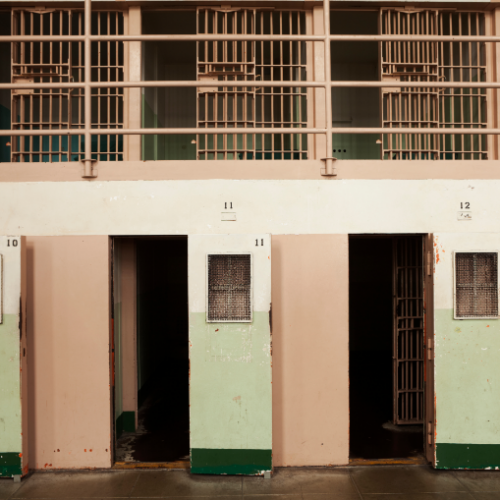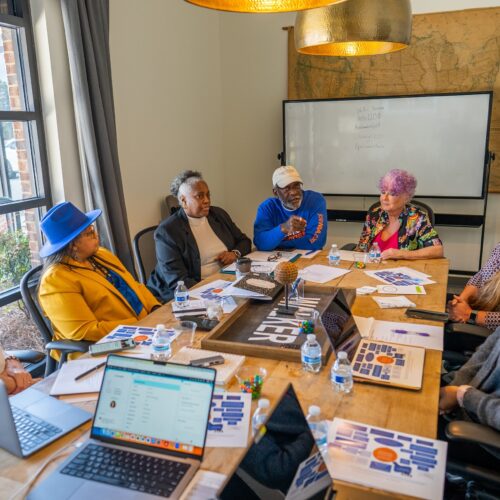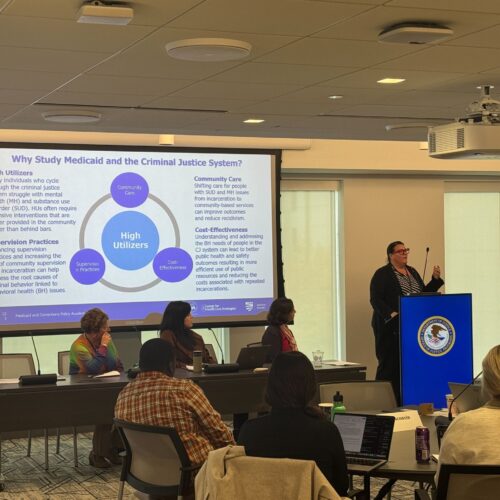Measuring Youth Outcomes in Juvenile Justice: The Leadership of Oregon Youth Authority
The ultimate indicators of a juvenile justice system’s success are recidivism reduction and improved positive youth outcomes. Yet, many jurisdictions struggle to collect and measure data on recidivism and other outcomes and to use this information to shape and strengthen policies and practices.
“Data collection is a challenge for the field, and not every system uses data to inform decision making for youth,” says Ned Loughran, Director of the Council of Juvenile Correctional Administrators. “If you do not measure your results, you cannot make change… and you cannot change what you do not measure.”
The Oregon Youth Authority (OYA), however, stands out among juvenile justice systems in its long-term commitment to using data and analytical tools to measure outcomes and improve policies and practices. For nearly two decades, OYA in partnership with local county juvenile departments across the state and other partners has been operating a statewide database called the Juvenile Justice Information System (JJIS), which compiles data on youth involved with the juvenile justice system in all the state’s 36 counties. JJIS allows OYA and its partners to track the involvement and outcomes of youth in the statewide system, share information on youth across juvenile justice jurisdictional and agency lines, generate a wide variety of reports in areas such as recidivism and other youth outcomes, and create a unified operational case management record.

Oregon Youth Authority Director Fariborz Pakseresht
“All of the data is simply informing the decisions that professionals, who know the youth, need to make,” says OYA Director Fariborz Pakseresht. “It provides additional information and guidance. A lot of people get nervous when we talk about data and numbers, but people need to make decisions, and data can help them in that decision making.”
In recent years, OYA has built upon JJIS to launch a series of data-driven initiatives, collectively known as the Youth Reformation System (YRS). YRS has helped OYA harness JJIS and other data to dramatically improve its policies, practices, and outcomes for youth. As part of YRS, OYA has created a series of advanced assessment tools that allow the agency to better understand youths’ needs and risk of reoffending and determine appropriate placement and service decisions. In conjunction with YRS, OYA has also developed a comprehensive performance management system that measures the effectiveness of key activities throughout the agency, ensuring that decisions regarding youth are based on data and that the services they receive are appropriate, effective, and correctly administered. In addition, YRS has enabled OYA to more accurately predict the number of facility beds the state will need over the next 10 years, which will help increase cost savings.
OYA has also partnered with other local, state, and national agencies to develop and implement data-driven initiatives to improve outcomes for youth in the juvenile justice system. In conjunction with the National Center for Youth in Custody (NCYC), the Council of Juvenile Correctional Administrators (CJCA) recently requested technical assistance from OYA to develop similar data driven approaches to decision making for several of its grant recipients: the Idaho Department of Juvenile Corrections, the Massachusetts Department of Youth Services, and the Texas Juvenile Justice Department.
“The grant is about the sharing of knowledge and helping jurisdictions implement similar concepts,” says OYA Director Pakseresht. “There is a gap that exists in how you take knowledge and implement it in the field. That is where the challenges and opportunities lie.
“We hope that the learning that comes from this project can be made available to other states, and that we can begin having these conversations at the national level,” he adds. “Through this project, we are exploring the practical implications of trying these concepts on the ground and in the field.”
“Over the next couple of years, we want to create a critical mass of jurisdictions that are implementing this data-driven management system approach,” says Director of the Council of Juvenile Correctional Administrators Loughran. “The overarching goal is to bring data collection and data-driven decision making to more of a national consciousness.”
For more on the Council of State Governments Justice Center’s work on youth involved with the juvenile justice system, click here. To learn more about Oregon Youth Authority’s Youth Reformation System, contact Shannon Myrick.
A positive school experience, where a child feels secure, is essential for their well-being. However, for many children…
Read MoreWhen returning to their communities from criminal justice settings, people with behavioral health needs face barriers in accessing…
Read More Supporting Children of Incarcerated Parents: Reimagining School and Community Collaboration
Supporting Children of Incarcerated Parents: Reimagining School and Community Collaboration
A positive school experience, where a child feels secure, is essential for their well-being. However, for many children with incarcerated parents—one in 14 in the U.S.—school can feel far from safe due to stigma, trauma, and a lack of understanding.
Read More Bridging Communities and Correctional Systems: Q&A with CSG Justice Center Advisory Board Member Commissioner Nicholas Deml
Read More
Bridging Communities and Correctional Systems: Q&A with CSG Justice Center Advisory Board Member Commissioner Nicholas Deml
Read More
 Assigned to the Cloud Crew: The National Incarceration Association’s Hybrid Case Management for People with Behavioral Health Needs
Assigned to the Cloud Crew: The National Incarceration Association’s Hybrid Case Management for People with Behavioral Health Needs
When returning to their communities from criminal justice settings, people with behavioral health needs face barriers in accessing basic needs—including food, housing, employment, transportation, education, clothing, and substance use and mental health services—which increases their risk of experiencing a crisis.
Read More Meet the Medicaid and Corrections Policy Academy Mentor States
Meet the Medicaid and Corrections Policy Academy Mentor States
New Hampshire Department of Corrections Commissioner Helen Hanks presents at the Medicaid and Corrections Policy Academy in-person meeting.
Read More Taking the HEAT Out of Campus Crises: A Proactive Approach to College Safety
Taking the HEAT Out of Campus Crises: A Proactive Approach to College Safety
The sharp rise in school shootings over the past 25 years has led school officials across the U.S. to take a closer look at ways to keep students safe. For Chaffey College in Rancho Cucamonga, California, a tragic incident at a nearby university hit close to home and spurred campus leaders to revisit their own school’s threat assessments and crisis responses.
Read More










